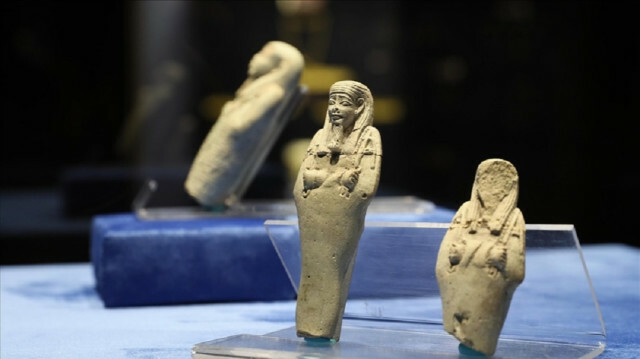Egypt's 'Ushabti' figures open to visitors for 1st time in western Turkey
2,700-year-old Ushabti statuettes, found in archaeological excavations in Turkey, used in funeral rituals in Egypt
The 2,700 year-old "Ushabti" statuettes used in funeral rituals in Egypt and found in archaeological excavations in western Turkey, began to be exhibited for the first time at an archeology museum in the Aegean Izmir province.
Ushabti figures, small statuettes made of wood, stone, or faience, are often found in large numbers in ancient Egyptian tombs.
Three ceramic Ushabti figurines found in Anatolia meet their guests in Izmir Archeology Museum.
Aiming to introduce a different artifact to local and foreign visitors every month, Izmir Archeology Museum has brought the breezes of the Nile River to Turkey this September.
The statuettes were transferred from Istanbul Archeology Museum to Izmir Archeology Museum in the 1930s.
It is believed that the statuettes were buried in tombs in Egypt with the aim of serving their owners as slaves in the afterlife.
Preserved for about 80 years in the warehouses of Izmir Archaeological Museum, the figurines indicate longstanding commercial and cultural relations between Egypt and Anatolia.
The figurines, with hieroglyphic inscriptions saying "ready for calls of duty of gods," will remain open to visitors in the treasury hall of the Izmir Archaeological Museum until the end of the month.
"We know that Anatolia and Egypt had very important deep-rooted relations in the fields of politics, culture, art, and trade in every period of history," Hunkar Keser, the director of Izmir Archaeological Museum, told Anadolu Agency.
* Writing by Zehra Nur Duz in Ankara
-- Sent from my Linux system.

No comments:
Post a Comment